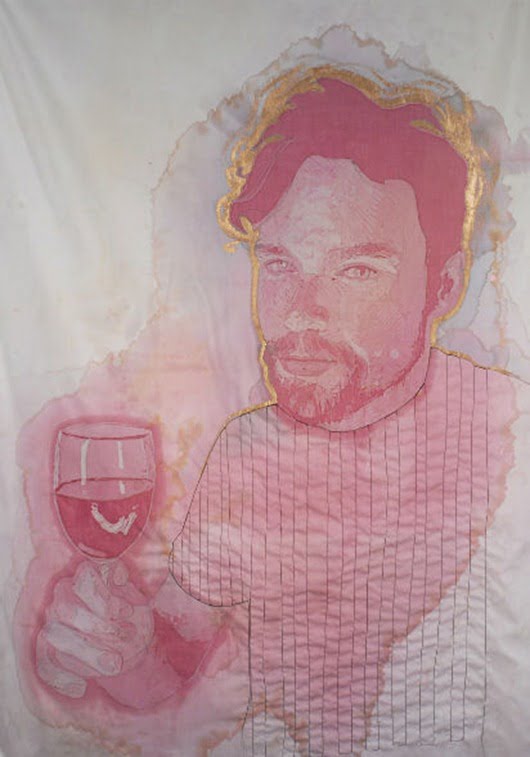Painting with Wine: Wine-Stain Artist Amelia Harnas.
July 19, 2012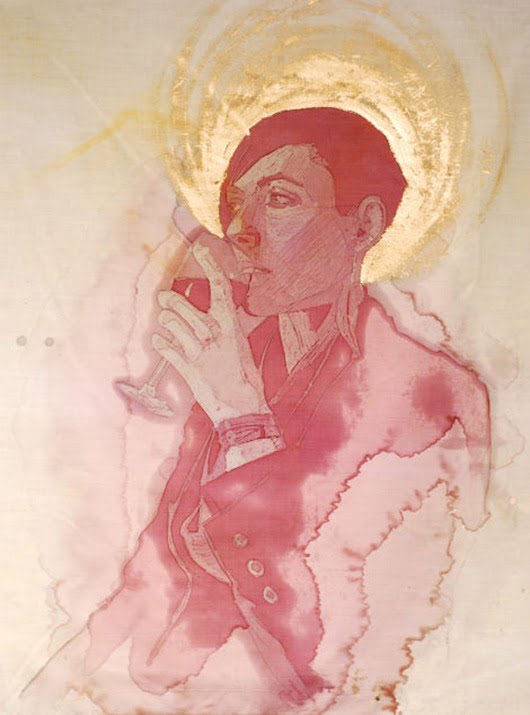
Has art always been a part of your life?
Yes, absolutely! I live in Corning, New York, which is a very small town, but I read a survey a few months ago that Corning was one of the best small art-towns in the country. We’ve got a really cohesive group of artists out here, and I was raised among them. Art is how I think and breathe.
I never technically went through art school. I was a terrible college attendee! I was too independently read. I went to four different colleges and wasted a bunch of money before I realized college just wasn’t for me.
Classic “artist story” then really…
I think a lot of artists who go through college and do the traditional stuff can do very well from it, and that’s great, but there are the other artists who perpetually have new ideas and do a lot more experimenting.
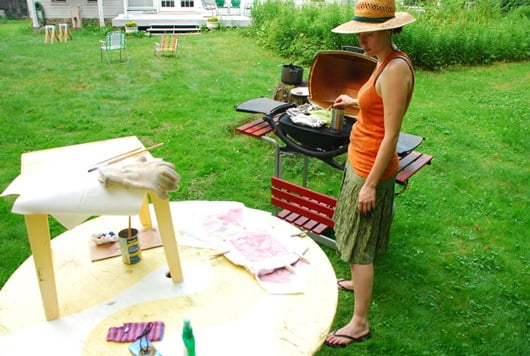
So your art isn’t your full-time job?
No, art isn’t my full-time job at all! <laughs> No, I make any sort of money from translating.
Oh, really?
It’s a very specific and very narrow type of translating that I do. I do French-to-English written documents that are medical and pharmaceutical-related.
So how long have you been doing your wine-stain paintings?
It’s been almost two years.
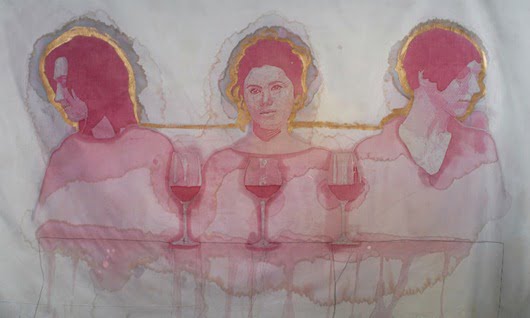 And how many pieces do you think you’ve done over the past two years?
And how many pieces do you think you’ve done over the past two years?
I think I’ve done close to forty. I have so many things that occupy my life, and my wine-stain art is just one of those things.
Have you tried to explore the commercial-side of selling these paining?
No, not really. The problem is that established media, like oil painting for example, there’s been hundreds and hundreds of years of people working with the materials and understanding how they work. Oil painting is a true science. I studied with a really amazing mentor for a while, here in Corning. He was the director of the Brooklyn museum of Art for a while, he knew oil painting so well and taught me so much about the science behind it. His training has really helped me in preparation for this.
With my art, the chemistry is the wine. For the first year, I didn’t show any of these to anybody, other than immediate friends because I was worried that they were going to discolor and fade. So I really sat on them for a good year, in anticipation that something was going to happen. In-short, I really didn’t want to start off immediately selling my paintings, only to find out that they might start fading.
For that reason, most of my paintings have just been of friends and family, although I did do one for a winemaker recently. [Pictured below]
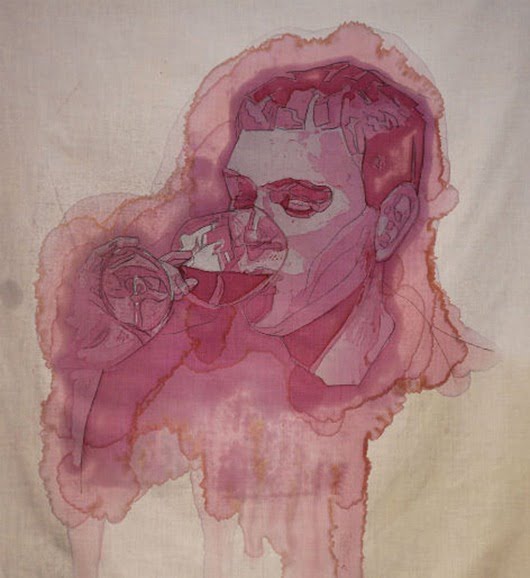
How long would you say an “average” piece takes?
Start to finish, one painting takes at least a day and a half. It’s a very intensive and unique process.
I’ll start with a drawing on the cloth (cotton), then I’ll cover-up what I want to be lighter, and I work from light to dark. Any section that I want to be really dark, I just have to stain several times with the wine to achieve the color I want. Each painting is a surprise, as to how the wine will take to the cloth.
Going back to my previous answer, I am still going about this in a completely misinformed state. There are very few other people who I can ask for advice on painting with wine!
Is it fair to say that the wine you are drinking is the wine you are using to paint with? Can you use bad wine, and is there any particular type of wine that works better?
I’ve been using a French Cohors, I think it only cost me $10. I like that style of wine. I think it’s nice and punchy. The coloration was really nice, kind-of an orangey-brown. My friend brought me over a Bordeaux and when I poured it into the glass it was horrible, so I just used it to paint with!
I’ve never had a wine not work, it’s more that I didn’t like the color. I live in the Finger Lakes region, and it isn’t especially known for its reds. It’s just too cold here, although I’ve had some quite good Cab Francs. I do know that Cornell University have been playing-around with all different types of hybrid grapes. It will be interesting to see what comes out of that, as being in the Finger Lakes, I want to draw attention to the region as much as possible.
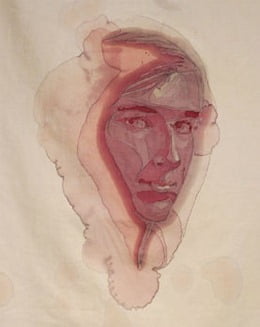
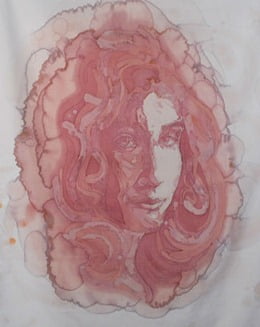
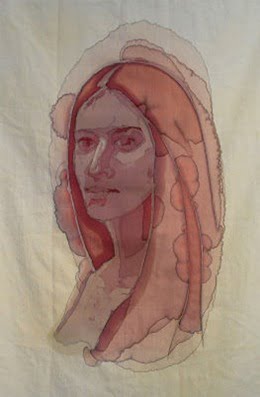 So even though you aren’t really selling these paintings, and I’m just making this up now, but is it fair to say that if someone wanted one of your paintings, and they sent you a bottle of their favorite wine and a portrait of themselves, you could do it for them?
So even though you aren’t really selling these paintings, and I’m just making this up now, but is it fair to say that if someone wanted one of your paintings, and they sent you a bottle of their favorite wine and a portrait of themselves, you could do it for them?
Oh yeah. Absolutely! 100% yes! I really need to do a better job of “putting myself out there” with wineries and restaurants etc. I think there’s a huge gaping hole that could be filled with this art, once I get the science nailed-down a little better. I just started down this, and I’m in a town of 12,000 people. If I lived in New York, it might be a different story.
How does the pricing work for your art?
I’ve done quite a few different sizes, and they run anywhere from $200-$1300 (unframed).
And how can people reach you?
The best way is through my website: www.trulyamelia.com
